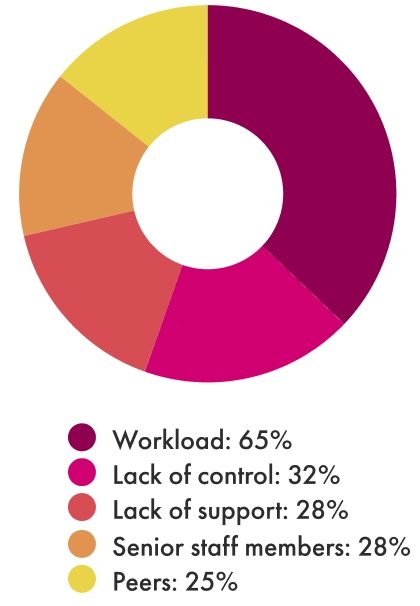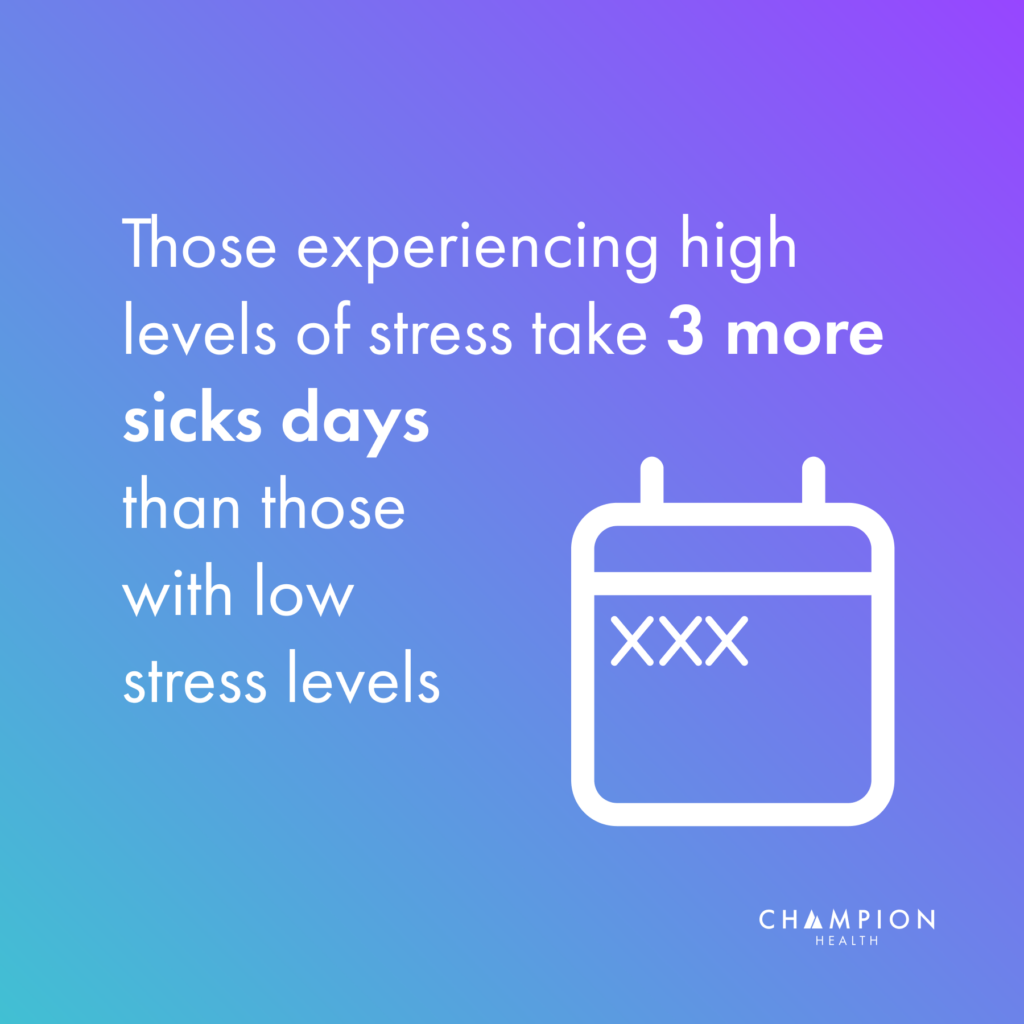Stress is the body’s reaction to feeling threatened or under pressure and we can all experience it. But what do the numbers say about stress in the UK? In this article, we’re going to find out as we dive into the latest data and stress statistics.
Too much stress affects our mood, body and our relationships. It can make us feel anxious and irritable, and even lower our self-esteem. That’s why it’s crucial that we can gain a clear and data-driven view of how stress affects us.
In this article, you’ll discover stress statistics for the entire UK population. You’ll also be introduced to how stress affects the working population.
Note: Looking for statistics on the state of employee mental health? Download a copy of The Latest Data on Depression and Anxiety.
Stress statistics
Stress has a larger impact on our society than many might think. Read on for our top picks of the latest stress statistics for the entire UK population:
- The most common cause of stress is work-related stress with 79% saying they frequently felt it (Statista)
- 1 in 9 (11%) UK adults feel stress every single day (Ciphr)
- 1 in 4 (24%) people in the UK feel stressed more days a month than they don’t (Ciphr)
- Around 17 million working days a year are lost because of ill health caused by work stress, depression or anxiety (HSE)
- 1 in 10 people are thinking about leaving their job due to stress (Cartridge People)
- 65% of employees state workload as their biggest cause of workplace stress (The Latest Data on Workplace Stress)
- 91% of women in the UK feel stressed at least once a month compared to 80% of men (Ciphr)
- 74% of people feel so stressed they have been overwhelmed or unable to cope (Mental Health Foundation and YouGov)
- Inpatient hospital admissions caused by stress-related illnesses in the UK cost around £8.13bn (Statista)
- 80% of employees are experiencing moderate-to-high levels of stress (The Latest Data on Workplace Stress)
- 29% say that due to stress they started drinking or increased their drinking (Mental Health Foundation and YouGov)
- 16% say that they started smoking or increased their smoking due to stress (Mental Health Foundation and YouGov)
- Of those experiencing stress, 16% had self-harmed and 32% said they had experienced suicidal thoughts and feelings (Mental Health Foundation and YouGov)
As the first statistic reveals, when many of us think of stress, we think of the workplace. With that in mind, let’s look at how stress affects us at work and what the data says about it.
Employee stress statistics
Workplace stress is often unavoidable – which is not always a bad thing. In fact, some stress can even be perceived as helpful.
But when levels of workplace stress become unmanageable, it can damage both your performance and health.
Read on for our top picks of employee stress statistics from third-party organisations:
- 13.7 million working days are lost each year in the UK because of work-related stress, anxiety and depression, costing £28.3 billion yearly (NICE)
- 60% of 18-24 year olds and 41% of 25-34 year olds feel pressured to succeed, versus just 17% of 45-54 year olds and 6% of over 55s (Mental Health Foundation and YouGov)
- 23% of adults say that work causes them stress (Ciphr)
The Latest Data on Workplace Stress also revealed an up-to-date view of the impact and prevalence of stress on UK employees.
The results revealed four key employee stress statistics:
- 80% of employees report moderate-to-high or high levels of stress
- 1 in 3 report that high levels of stress impact productivity
- The top cause of work-related stress is workload (65%)
- Those experiencing ‘unhelpful’ levels of workplace stress work 2 hours extra on average per week
Read on to explore this data in more detail.
1. 80% of employees report moderate-to-high levels of stress
The Latest Data on Workplace Stress paints a picture about how many employees are experiencing workplace stress.
This data revealed the impact of stress on professionals in the UK, with 80% of individuals currently experiencing moderate to high levels of stress up from 76% in 2023.
We also found that only 20% of employees are experiencing low to low-moderate levels of workplace stress.
2. Nearly 1 in 3 report that high levels of workplace stress impact productivity
Everybody’s capacity to manage stress is different, which raises the importance of an individualised approach to stress management within organisations.
For example, we revealed that nearly 1 in 3 employees reported that high stress was impacting their productivity.
On the flip side, we found that productivity peaks when workplace stress is perceived as ‘helpful’.
3. The top cause of work-related stress is workload (73%)
Champion’s data shows that by far the most common source of workplace stress for employees is workload, with other commonly cited issues including lack of support, lack of control and senior staff members.
Workplace culture plays a huge role in employee stress levels, so it is important we prioritise making the working environment a nice place to be.
The Latest Data on Workplace Culture shines a light on workplace culture statistics for 2024, and how employers can continue to evolve their culture.
4. 53% of those experiencing ‘unhelpful’ levels of stress work more than 50 hours a week
Our stress statistics revealed that of those reporting ‘unhelpful’ levels of workplace stress are working, on average, 50 hours per week – which only exacerbates the issue.
Furthermore, those experiencing high levels of stress take, on average, 3 more sick days than those who are reporting low levels of stress.
“Champion’s data reflects every employee’s unique relationship with stress. Regardless of this, for almost all aspects of an individual’s health and wellbeing, effective stress management or stress reduction is a quick route to improved health across the board.
“In tackling stress at work, consider that human beings have three universal psychological needs. These are autonomy (feeling like you’re in control and have choice and flexibility), competence (having an optimal level of challenge and being confident in your ability to complete a task) and relatedness (feeling connected and that you are cared for). When any of these are not present, negative stress can quickly arise,” writes Vicky Fytche, Wellbeing Lead at Champion Health.
Stress statistics: it affects us all
Whether it’s our personal lives, the workplace, time pressures or anything else, the world is full of stressors. Even those living fulfilling lives with rewarding careers will experience stress day-to-day.
But there are things we can all do to support our wellbeing and help maintain positive levels of stress. See the following resources for more information:
- Get help with stress (NHS Guidance)
- Top causes of stress at work (Guide)
- Ways to deal with stress at work (Guide for employees)
- Ways to Reduce Workplace Stress (Guide for employers and leaders)
- How Champion Health helped reduce stress at Strata (Case Study)
- Save your employees from burnout (Video)
Regardless of how you experience stress, remember that support is out there.











